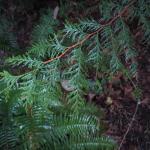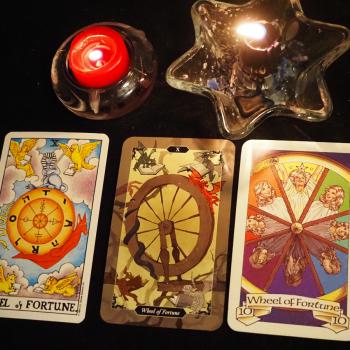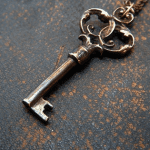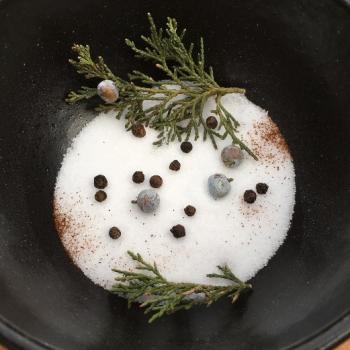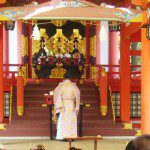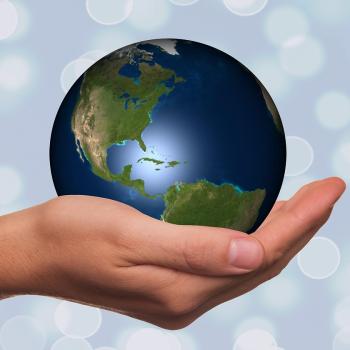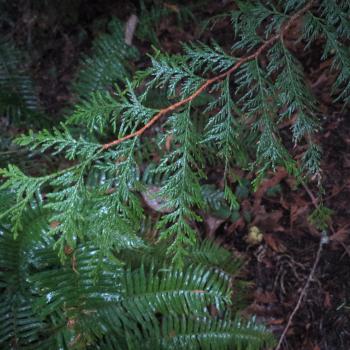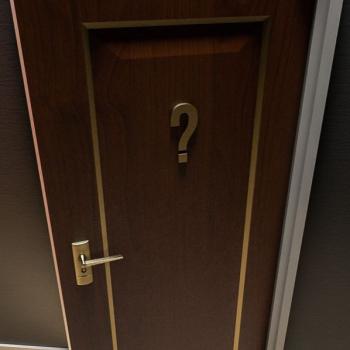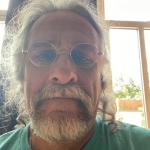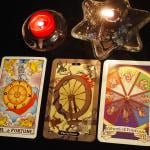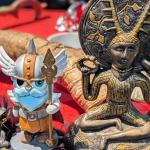It all started when my therapist recommended ancestor work.
I was initially resistant. “My ancestors were racist. I don’t want to work with them,” I said. “Also they were Christian. Why would they want to talk to a Witch?” She assured me that she finds the ancestors want to be in relationship and are genuinely helpful.
So I opened an Ancestry account. This turned into my new research obsession. If you’ve traced your own lineage you know what I’m talking about. If you haven’t this is a fair warning that it’s likely to suck you in – it’s the Story of You.
Settler Ancestors
When I found a photo of my father’s grandmother I realized I had visited her when I was a young child. I had been ceremonially introduced to her in a conscious effort to bind her memory to the youngest generation. This sparked the memory of walking on the Kansas plain where she showed me a prickly pear cactus fruit. She told me that this was good to eat if you didn’t have anything else. She urgently felt this was important knowledge for the family to keep.
It occurred to me that this plant knowledge must have come from Indigenous people. I pulled up the Tribal Nations maps and found that my father’s family had settled in Ka’igwu (Kiowa) territory. Did they eat prickly pear?
Of course they did. The Ka’igwu memory keepers drew images on skins twice a year to mark notable events. In the summer of 1856 the memory keeper Set’tan pictured a gathering and explained to an anthropologist “This dance was held at a place where there was an abundance of prickly-pears.”
The Ka’igwu peoples signed the Medicine Lodge Treaty of 1867 on a sun dance site. In 1901 the federal government laid Kansas out on a grid; some lots were allotted to Ka’igwu people and the rest was opened to settlers.
One of those white settlers was my great-great-aunt Cleopatra. Cleopatra filed a homestead entry in 1904 on her own behalf, then filed her five-year proof in 1909. So the theft of native wealth isn’t theoretical for me, my personal family directly benefitted from the dispersal of Ka’igwu lands. I had to sit with that for a minute.
It was pretty unusual for a woman to file a homestead claim on her own. The settlers would witness for each other when they filed that final claim. Aunt Cleopatra’s witnesses were men and she witnessed for other settlers who were all male. So why was she alone? It turned out her husband was an actual horse thief and got himself thrown in prison. She took up with two other men until her final divorce in which she kept all her property. Aunt Cleopatra must have been a firecracker!
I was interested in working with her. First though I had to deal with the issues her land theft brought up. I went searching for people who had done work with white ancestors.
Whiteness is Not an Ancestor
I found that there are other women confronting this legacy. Lisa Iversen’s anthology Whiteness is Not an Ancestor contains a dozen first-person accounts of this work. Each of the essays grapples with a difficult history: lynching, massacres of Indigenous villages, slaveholding, Nazi genocides, denial of health care to people of color. They reject the demand of their families to hide these stories and instead lay the history bare.
They ask other white people to join in the work. Sharon Halfnight issues an invitation “to face complicity in harm with integrity and without defensiveness”. Kate Regan encourages us to walk in the shoes of the perpetrator and recognize the loss of identity that results from shame. Sonya Lea says: “White Americans and Canadians are accustomed to seeing themselves as rescuers or victims, but seeing oneself as a perpetrator takes time and attention.”
Immigrants who arrived here after the first wave of colonization encountered prejudice. German, Italian, Irish, Jewish, Polish, Russian newcomers accepted substandard housing and menial labor to establish their families. Often they engaged in voluntary assimilation, refusing to teach their children their own languages and forcing them to speak only in English. They lost their ethnic identity and became white. They then became persecutors themselves, holding enslaved people and taking Indigenous lands. White people tracing our ancestry sometimes skip over these generations to connect with the ancestors fleeing persecution and the destruction of their homes. It’s important to reclaim the full history of our families. This includes both the history they wanted us to forget and the history of their exploitation of others.
Anne Mavor has gone quite far down this road. She created the installation I am my White Ancestors to tell stories of twelve of her real and imagined forebears. She sewed costumes for each of them and took photographs standing in them. Mavor embraces both the positive and negative aspects of her history as a step toward ending racism. She describes how each of her ancestors affected her personally. Here’s her reaction to her Viking ancestor Ragnhilde Hrolfsdottir: “I was sympathetic to her constricted life and impressed by her courage. I could envision Ragnhilde immediately: spirited and strong, but also bitter and lonely. She plotted for years to gain her freedom and when the chance came, she took it. I just wish she hadn’t been so cruel.”
That’s the way I feel about Aunt Cleopatra. I acknowledge her participation in the theft of Ka’igwu lands and the foundation of my family’s prosperity in this injustice. I own the guilt and shame this brings me. I also know it’s up to me to process these this. White fragility demands that people who have been harmed salve our wounded feelings, so taking responsibility for that emotional work is a good first step toward ending that harm.
Restorative justice has to go a lot farther than telling stories about our families and feeling our feelings.
This work is sometimes framed as restorative justice. Personally I think restorative justice has to go a lot farther than telling stories about our families and feeling our feelings. I think we need to make real world acts of reparation. At the very least we can research the tribal peoples our families have displaced and find out what they ask white settler descendants to do today. We can also connect with organizations working toward racial equity – the NAACP welcomes everyone.
Real world reparations are desperately needed and I’m glad to help move that forward. But I’m also a Witch. Are there no magical reparations we can make?
Ancestor Magic
When I set out to research ancestor magic I found books written by Indigenous people as well as descendants of the African Diaspora. They draw on their connection with their ancestors to repair the damage of colonization and to heal generational trauma.
These are hopeful works and I am humbled to read their stories. They describe practices like setting spirit plates and smudging and making mojo bags. These are not closed customs, they’re published for anyone to read, so I could pick them up and use them. Of course that’s what my ancestors did when they saw something they wanted, they just took it. I want to move in the world differently. I want to engage people in their own communities in a respectful and ethical way. It doesn’t seem respectful to contact my ancestors using practices developed by people they persecuted. Practices developed precisely to survive that persecution.
So I looked for books written by white people. Two have been particularly helpful. Nancy Hendrickson’s Ancestral Tarot describes how to use Tarot to communicate with our ancestors. Hendrickson also pointed me to using astrological charts to understand the character of a particular ancestor. That’s been informative. Aunt Cleopatra had her sun in Sagittarius which accounts for her charm and Ares rising which accounts for her gumption.
Ben Stimpson’s work Ancestral Whispers guided me through building an ancestral practice. He is aware of closed practices and urges readers not to imitate them, especially those that require apprenticeship and initiation. He comments “It doesn’t make much sense to practice things that you don’t understand, and only through relationship and interaction with the stewards of those practices can you understand them”. That validates my intuition that I need to be in community with other practitioners to adopt a practice.
To recap, I find works by white people grappling with the legacy of white ancestors that don’t include magical practice. I also find works by white people about magical practice that don’t directly address the persecution our ancestors perpetrated. I haven’t found anyone talking about the combination. How do I work magically with my white ancestors and also address the racism in their legacy? I’m groping my way toward my own practice.
Ground Rules with the Ancestors
First, I need ground rules.
Ground Rule One: Setting Limits
There are some ancestors I won’t work with. Nancy Hendrickson says “you never have to honor an ancestor who made your life a living hell”. I was no contact with my mother when she died and I’m no contact with her after death too.
One of my core values is that I get to decide which spirits I will interact with. Many spirits make demands on the living. Deities, elementals, land spirits, powerful dead, tap for contact and make requests for exchange. I can choose to enter into the exchange and I can also choose to decline.
Not every Witch shares this value. Some traditions believe that humans are the servants of deities and that we should interact with whoever calls us. This is a perfectly valid operating practice in those communities. I’m Golden Dawn trained, I can carry a deity, but I remain in control of the interaction. In my spirit relationships as well as my human relationships I retain the power to say no.
Ground Rule Two: Be Honest
I considered placing all my ancestors who enslaved others and participated in genocide on the no-contact list too, but Anne Mavor’s work embodying her ancestors has been helpful to conversation opposing racism and colonialism. I don’t want to embody my cruel ancestors, but I recognize that I don’t get a choice about that. I owe my physical life to them. I owe the white privilege that has made my life easier to them too, whether I want it or not. My job is to recognize what they did and talk about it openly.
I decided that I would bring my experience in having difficult conversations with white people to my ancestor work. Specifically, I’d call on Aunt Cleopatra but I was also going to talk to her about what she did.
Aunt Cleopatra filed a homestead claim for lands taken from the Ka’igwu. I decided to put this front and center in my initial work with her. I made an ancestor board for her by pinning images to a cork square. The images include a photo of her and a grainy photo of a turn-of-the-century Kansas farm house. I added a copy of a Ka’igwu memory keeper’s 1901 image “Allotment Summer” showing a grid on the land.
Ground Rule Three: Conversation Ritual
I don’t have to talk to every spirit who wants to communicate with me. I also don’t have to talk to any spirit when they want to communicate with me.
This is a core value too. My time is my own. I’m not available 24/7 to anyone when they want to talk with me. This is true for my family and friends as well as people I don’t know. It’s always okay to ask but it’s not okay to insist. I might be able to talk right away, I might need just a minute to finish something, or I might need to schedule the conversation for later, but I have to agree for the contact to take place.
The exception here is caregiving. Both of my partners have neurological diseases and there are ongoing emergencies that require me to drop everything and go to the emergency department. People with children also have to take care of the kids when they need it. That’s one reason caregiving is so exhausting, you’re on call all the time, but it’s a mark that we love and are loved. Giving and receiving care is a human responsibility and privilege.
Just as we have to respond to real world emergencies, it may not be possible to reschedule a spirit contact. People who do ancestor work report that spirits talk to them at odd moments. They communicate through animals or synchronicities or whispers at the back of the mind. I’ve had ongoing conversations with the recently deceased all my life. I know that it’s not always easy for spirits to cross the veil, you have to grab the opportunity when it comes up. I’m open to that and fine with it.
Where I draw the line is when a spirit wants an open line all the time. A deceased friend latched onto me right after death and followed me around with requests. Some I agreed to do, some I refused. Eventually I realized it was an energy drain to carry him around so my coven helped to sever the ongoing connection. He can still talk to me, just not all the time.
To enforce this rule in my ancestor work I make formal conversations. I light a candle to start the conversation and blow it out at the end of the conversation. When I first started this work I had photos on my ancestor altar but I found that gave me the sense of being watched all the time. Now I bring an ancestor board out when I want to work with that spirit, leave it up for a day or two, then and put it away when the work is done.
I get the impression that the spirits don’t want to be on call to me all the time either. Nancy Hendrickson suggests starting a session with a spirit by asking politely if they’ll come forward. “If they don’t, my assumption is they’re busy doing something else.”
Talking with the Ancestors
With the ancestor board as a focus, a Tarot deck for communication, and a ritual to start and end contact, I was ready to do the work. I sat down with Aunt Cleopatra. I introduced myself to her through my lineage and asked her if she was willing to talk. The cards said yes.
I started with thanking her for her contribution to my physical life. I am in the world because she brought children into the world. I told her what I’d learned about her husbands and children. I admired how she did the hard work of homesteading on her own.
Then I talked about the process of allotment. I don’t know if she knew in life that she was on Ka’igwu lands, and I don’t know what she thought about the Ka’igwu people, but I wanted her to know that a hundred years later we’re assessing the cost of her homestead. The Ka’igwu people lost land and a way of life. White settlers lost the opportunity to behave with integrity as good neighbors. As a Witch descended from white settlers I mourn the loss of that integrity and the shadow it casts on my relationships with Indigenous peoples. When I do magic on these lands I first have to acknowledge that. This is part of her legacy to me.
Once I had said that I felt the way had cleared for me to ask for her assistance in my life. Like her I have made my own way in the world and I am inspired by her strength.
I asked her what she wanted to say to me and did a reading for the answer. The cards suggested listening for her voice in dreams and when I’m out in nature. They also suggested that I work on being more positive. It’s a fair call out, I tend to focus on what’s gone wrong. I could also interpret the reading as a subtle pushback on what I had to say to her: stop scolding and listen. The interaction had the flavor of the difficult conversations I have with white people. Turns out it doesn’t matter if they’re alive or not! It’s still awkward but necessary.
Healing the Ancestors
I think it’s important to do ancestor work for reparations and healing. Facing our guilt and shame allows us to tell the stories. When we bring the terrible secret we’re denying out in the open it’s a great relief. We heal ourselves and we transform the lives of those who come after us. We are the generation where racism begins to stop in our families. It won’t happen in my lifetime, I still say and do racist things despite my best efforts, but the change has started here.
This work also brings the stories of our ancestors to a more peaceful conclusion. Many cultures understand the relationship with our ancestors to work both ways, they can help us and we can also help them. For example the Hindu ritual of Mahalaya or Pitru Paksha makes offerings for three generations of ancestors to find peace and to bestow their blessings.
This is true both for our families and our communities. Many cultures understand the individual to be embedded in an extended network which includes biological relatives, adoptive families and kinship groups. The magical work we do affects our entire network of connections.
This links up with the work every other community is doing to heal ancestral trauma. White people have our part to do. It’s our unique job to acknowledge the harm our ancestors did in addition to the harm they experienced, but otherwise our ancestor work looks like everyone else’s. We too have ancestors, we too have pain in our history, and we too can draw strength from their ongoing support. Working with our ancestors joins us to the common history of humanity.


